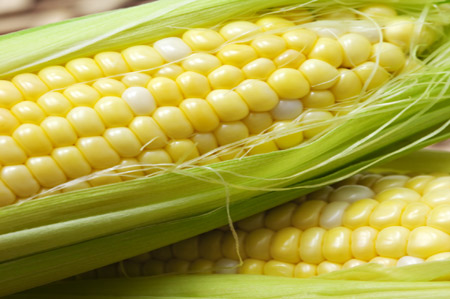High-yield corn production and hybrid selection
Category: Grains
 (AgProfessional) – Two DuPont Pioneer employees put together an extensive article explaining high-yield production practices for corn. The authors are Mark Jeschke, agronomy research manager, and Steve Butzen, agronomy information manager, both working at Johnston, Iowa. The most important points related to hybrid selection and agronomic practices are included below.
(AgProfessional) – Two DuPont Pioneer employees put together an extensive article explaining high-yield production practices for corn. The authors are Mark Jeschke, agronomy research manager, and Steve Butzen, agronomy information manager, both working at Johnston, Iowa. The most important points related to hybrid selection and agronomic practices are included below.
As the two noted, “Improved hybrids and production practices are helping corn growers increase yields. Over the past 20 years, average U.S. corn yields have increased by over two bushels an acre per year. Winning non-irrigated yields in the National Corn Growers Association national corn yield contest have increased at twice the U.S. average rate in the last 10 years. Many agronomic practices used by contest winners can be applied to all production fields.”
They also note that selecting the right hybrid can affect yield by more than 30 bushels an acre, “making this decision among the most critical of all controllable factors.”
Agronomic improvements that are improving yields include herbicides that improve weed control with less crop response, higher plant populations, foliar fungicides and seed treatments that include insecticides. The two authors further note, “Foliar fungicide use has been an important component of high-yield corn production in recent years. Keeping fields free of stresses caused by leaf diseases and stalk rots is important to achieving top corn yields.”
According to the Pioneer writers, “Hybrids tested against each other in a single environment (e.g., a university or seed company test plot) routinely vary in yield by at least 30 bushels an acre. At contest yield levels, hybrid differences are likely even higher. That is why selecting the right hybrid is probably the most important decision of all those made by contest winners.
The yield potential of many hybrids now exceeds 300 bushels an acre. But a grower has to realize that yield potential requires matching hybrid characteristics with field attributes such as moisture supplying capacity, insect and disease spectrum, maturity zone, residue cover and even seedbed temperature.”
They provide several bullet points for seed salesmen and farmers to discuss in order to achieve the highest possible yields. Growers need to select a hybrid with the following:
- “Top-end yield potential. Examine yield data from multiple, diverse environments to identify hybrids with highest yield potential.
- Full maturity for the field. Using all of the available growing season is a good strategy for maximizing yield.
- Good emergence under stress. This helps ensure full stands and allows earlier planting, which moves pollination earlier to minimize stress during this critical period.
- Above-average drought tolerance (not needed under full irrigation.) This will provide insurance against periods of drought that most fields experience.
- Resistance to local diseases. Leaf, stalk and ear diseases disrupt normal plant function, divert plant energy, and reduce standability and yield.
- Traits that provide resistance to major insects such as corn borer, corn rootworm, black cutworm and western bean cutworm. Insect pests reduce yield by decreasing stands, disrupting plant functions, allowing diseases, feeding on kernels, and increasing lodging and dropped ears.
- Good standability to minimize harvest losses.”




